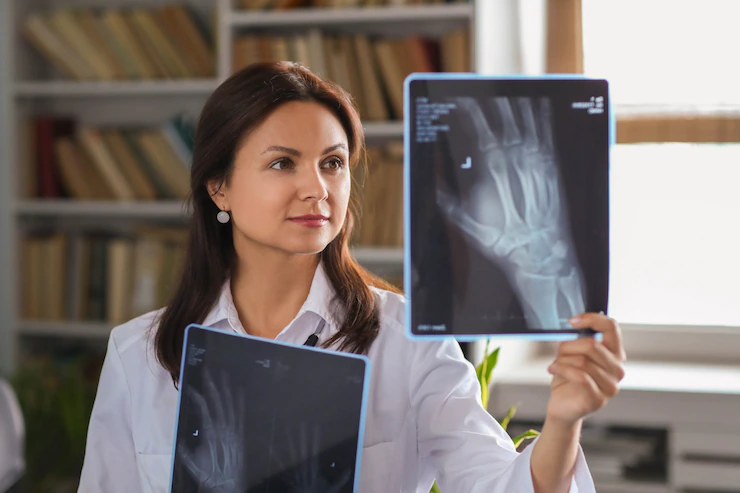The digital X-ray procedure is highly similar to traditional X-rays; it is the technology that is very different. Bursts of radiation still pass through the body and form an image based on how much radiation passes through the different organs, but rather than using photographic film to capture the image, digital sensors are used.
- Digital X-ray sensors usually come in the form of active matrix flat panels made up of a detection layer over an active
- matrix array of thin film transistors and photodiodes. These sensors are able to convert the image into digital form in real time, allowing the doctor
- Digital X-rays, much like traditional X-rays, allow the doctor to examine inside a patient’s body.
Digital X-rays or digital radiography (DR) is a procedure that uses X-ray sensitive plates to capture data and instantly produce a digital radiographic image on a computer. This technological advancement has made examination procedures more efficient for medical practitioners
Digital x-rays: Use 70% less radiation than traditional film x-rays. Take less time to take and are easier to take than traditional film x-rays.
They are better for the environment because they don't require developing. They can be viewed on a computer monitor within seconds of taking the image. They can be enhanced and enlarged for better diagnostics. They can be sent to other providers in an instant via email.

